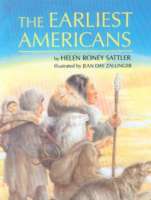
Presents the scientific evidence for the origins of the earliest people in the Americas and describes the accomplishments of their culturally diverse descendants prior to the arrival of Europeans in 1492.

Presents the scientific evidence for the origins of the earliest people in the Americas and describes the accomplishments of their culturally diverse descendants prior to the arrival of Europeans in 1492.
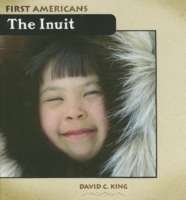
Provides comprehensive information on the background, lifestyle, beliefs, and present-day lives of the Inuit people.
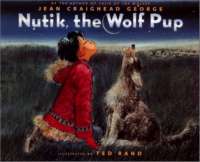
In an Eskimo village at the top of the world lived a little boy whose name was Amaroq. Named for the great wolf leader who saved the life of his big sister, Julie, Amaroq loved wolves as much as his big sister did.
One day Julie brings home a sickly wolf pup named Nutik for Amaroq to feed and tend. “Don’t fall in love with Nutik,” Julie warns, “or your heart will break when the wolves come to take their pup home.” Amaroq feeds and cares for Nutik, and soon the fuzzy little pup is romping and playing and following Amaroq everywhere. Amaroq and Nutik become best friends, but soon it’s time for Nutik to rejoin his wolf family. Will Amaroq be strong like the great wolf leader he was named after and be able to let Nutik go?
In this adventure-first told in Julie’s Wolf Pack, sequel to the Newbery Medal-winning Julie of the Wolves Jean Craighead George brings the Arctic world of Julie and her family to a picturebook audience.
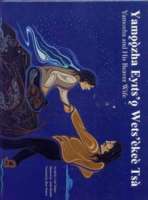
In this legend, Yamozha forgets his promise to his wife and as a result she turns into a giant beaver. He follows her all over Denedeh but is unable to catch her. This story tells of how this great medicine man shaped the land in the Tlicho region and its surrounding areas into what it is today.
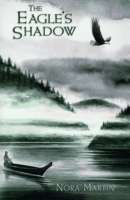
In 1946, while her emotionally distant father is in occupied Japan, a twelve-year-old girl spends a year with her mother’s relatives in a Tlingit Indian village in Alaska and begins to love and respect her heritage as she confronts the secret of her mother’s disappearance.
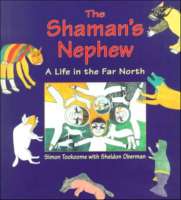
When Jewish author/storyteller Sheldon Oberman met Inuit artist/hunter Simon Tookoome, he knew the encounter was special. Still, he had no idea their meeting would result in an amazing collaboration that would span a decade. Through the use of many tape recordings and translations, Sheldon has painstakingly woven the threads of a remarkable man’s life into a book for all to treasure. With Tookoome’s drawings to enhance the text, Oberman has managed to express the cadence and voice of one of the last of the Inuit to live the traditional nomadic life in the Arctic. The Shaman’s Nephew magically transports readers to a cold climate that warms and grows more familiar with every turn of the page.
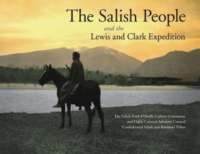
On September 4, 1805, in the upper Bitterroot Valley of what is now western Montana, more than four hundred Salish people were encamped, pasturing horses, preparing for the fall bison hunt, and harvesting chokecherries as they had done for countless generations. As the Lewis and Clark expedition ventured into the territory of a sovereign Native nation, the Salish met the strangers with hospitality and vital provisions, while receiving comparatively little in return. For the first time, a Native American community offers an in-depth examination of the events and historical significance of their encounter with the Lewis and Clark expedition. The result is a new understanding of the expedition and its place in the wider context of U.S. history. Through oral histories and other materials, Salish elders recount the details of the Salish encounter with Lewis and Clark-their difficulty communicating with the strangers through multiple interpreters and consequent misunderstanding of the expedition’s invasionary purpose, their discussions about whether to welcome or wipe out the newcomers, their puzzlement over the black skin of the slave York, and their decision to extend traditional tribal hospitality and gifts to the guests. What makes The Salish People and the Lewis and Clark Expedition a startling departure from previous accounts of the Lewis and Clark expedition is how it depicts the arrival of non-Indians-not as the beginning of history, but as another chapter in a long tribal history. Much of this book focuses on the ancient cultural landscape and history that had already shaped the region for millennia prior to the arrival of Lewis and Clark. The elders begin their vivid portrait of the Salish world by sharing creation stories and the traditional cycle of life. The book then takes readers on a cultural tour of the Native trails that the expedition followed. With tribal elders as our guides, we now learn of the Salish cultural landscape that was invisible to Lewis and Clark. The Salish People and the Lewis and Clark Expedition also brings new clarity to the profound upheaval of the Native world in the century prior to the expedition’s arrival, as tribes in the region were introduced to horses, European diseases, and firearms. The arrival of Lewis and Clark marked the beginning of a heightened level of conflict and loss, and the book details the history that followed the expedition: the opening of Salish territory to the fur trade, the arrival of Jesuit missionaries, the establishment of Indian reservations, the non-Indian development of western Montana, and more recently, the revival and strengthening of tribal sovereignty and culture. Conveyed by tribal recollections and richly illustrated, The Salish People and the Lewis and Clark Expedition not only sheds new light on the meaning of the expedition, but also illuminates the people who greeted Lewis and Clark, and despite much of what followed, thrive in their homeland today.
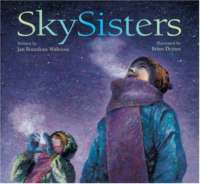
Two Ojibway sisters set off across the frozen north country to see the SkySpirits’ midnight dance. It isn’t easy for the younger sister to be silent, but gradually she begins to treasure the stillness and the wonderful experiences it brings. After an exhilarating walk and patient waiting, the girls are rewarded by the arrival of the SkySpirits — the Northern Lights — dancing and shimmering in the night sky. This powerful story, with its stunning illustrations, captures the chill of a northern night, the warmth of the family circle and the radiance of a child’s wonder.
Describes the family life, games, hunting and fishing techniques, homes, clothing, beliefs, and means of travel of the Indians of the Northwest.